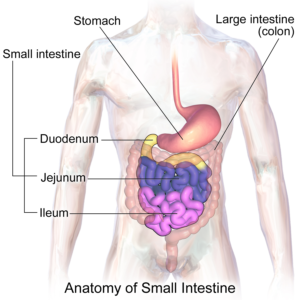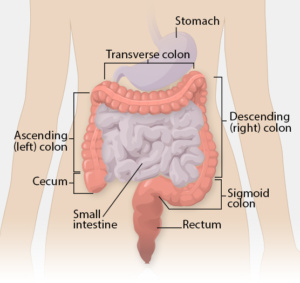The Twisted Red Strawberry Smoothie – Healthy & Helpful Tips With Melissa
Join our 6 weeks of weeks of crazy colorful smoothies! The first one being the amazing Red smoothie. made with Melissa Bistricer, trained Chef and Dietitian.
Nutrition. Vitamins. You.
Join our 6 weeks of weeks of crazy colorful smoothies! The first one being the amazing Red smoothie. made with Melissa Bistricer, trained Chef and Dietitian.
Ever wonder what the difference between prebiotic and probiotics are? Well today you can learn the simple difference with Melissa Bistricer, MS, RDN.
Digestive health
Written by Dr. Claire Arcidiacono, ND
For further questions or concerns email me at carcidiacono@invitehealth.com
Digestive Health affects practically everyone who eats and goes to the bathroom. But what is a healthy digestive system? It’s important we start at the beginning.†
The digestive system is a separate system from the rest of the body. It has its own immune system, nervous system and enzymes. Anything you consume, such as food stays in the digestive system. For example, if you eat an apple, it stays in your digestive system and doesn’t float around in your blood somewhere. The digestive system is made up of a “roadway” called the gastrointestinal tract or GI tract. The GI tract is made up of the liver, pancreas and gallbladder; pictured below. (1) Since this is a complex topic, I will focus mainly on the digestive tract.†

The Gastrointestinal tract starts in the mouth. Our teeth are the first and important part of the digestive process. They help the salivary glands in the mouth help to breakdown food, especially complex carbohydrates. If you chew on a cracker for long enough, the enzymes in your mouth will break it down so it will taste sweet! (2) It is important to keep your mouth healthy and clean by brushing your teeth twice a day! Once you break down your food, you swallow it, where it enters the next part of the digestive system.†
The swallowed food travels through the esophagus. A gateway called the lower esophageal sphincter, separates the stomach form the esophagus. When you eat or drink, this triggers the sphincter to open; so the food can enter the stomach. However, sometimes there is an issue with the sphincter not closing properly; causing acid in the stomach to flow into the esophagus leading to “heartburn”. (3) Once you’re done eating, the sphincter closes, entering the stomach.†
The stomach is basically a blender, containing digestive enzymes and acid. The acid in the stomach is important for the enzymes to work properly. (4) It mixes the food, enzymes, and acid together to breakdown the food; killing any pathogens that may be present.†
After the stomach, the food travels to the small intestine which is only small due to its width; its length being 22 feet long! Much like the stomach, the small intestine (SI) continues to breakdown food. The SI receives enzymes from the pancreas and bile from the liver. Unlike the stomach, the SI is also in charge of the absorption of nutrients. It’s broken down into the following parts: duodenum, jejunum and ileum, pictured below:†

FATTY LIVER DISEASE IS ON THE RISE – INVITE HEALTH PODCAST, EPISODE 349 >> Listen Now!
The duodenum or first section of the SI is responsible for the breakdown of food. While the jejunum and Ileum are mostly responsible for the absorption of nutrients. In other words, semi solids enter the small intestine and get mixed with water, bile, enzymes and mucus to become semi liquid.†(5)
From there, the food will travel to the Large intestine or LI. This is also known as the colon. The colon (pictured below) is made up of the cecum which is connected to the SI, the ascending colon, transverse colon, descending colon and the sigmoid colon which connects to the rectum and then finally the anus.

The colon absorbs water and produces waste material known as stool or feces; which is food debris and bacteria. Good bacteria in the colon help us by making certain vitamins and protecting us from pathogens. The rectum is connected to the anus, the final part of the digestive tract. The anus has sphincter muscles that allow us to control bowel movements. Normally, they allow us to hold stool until our body is ready to release it.† (6)
The GI tract is just one part of the digestive system. Next week we will move on to the organs outside of the digestive tract; which will include the pancreas, liver and gallbladder.†
https://my.clevelandclinic.org/health/body/7041-digestive-system
https://my.clevelandclinic.org/health/body/21765-mouth
https://my.clevelandclinic.org/health/body/21728-esophagus
https://my.clevelandclinic.org/health/body/21758-stomach
https://en.wikipedia.org/wiki/Small_intestine
https://en.wikipedia.org/wiki/Large_intestine


Candida is a very common type of fungus that can cause issues such as oral thrush and yeast infections when it becomes overgrown. The good news is that there are steps you can take to help prevent this overgrowth.
As the seasons change, it is a good idea to turn to nutrients that can support natural detox processes in the body. Our Colon Hx formula contains powerful constituents that can help remove toxins from foods and the environment.
microbiome
Invite Health Podcast, Episode hosted by Amanda Williams, MPH
Subscribe Today!
You’ve probably heard a lot about gut health, digestive health and the microbiome, but what does this really mean? Today, we’re going to discuss what the microbiome is, what it does, why it is so important for our overall health and what you can be doing to make sure you are maintaining your gut microbiome.†
THE GUT-BRAIN AXIS: THE LINK BETWEEN YOUR GUT AND BRAIN, PART 1 – INVITE HEALTH PODCAST, EPISODE 175. Listen Now>>
In recent years, there has been an influx of studies looking at different bacterias and how they can impact our health, either in a negative way or a positive way. The microbiome is basically this environment for or community of these microbes or bacteria that live within the human body. This is located predominantly in the intestines. There are hundreds of different strains of bacteria that exist within the individual human microbiome environment.†
The amount and type of bacteria present in the microbiome can vary from one person to the next. There are common bacteria that can be found in all people, but we can sometimes have a lot more of one and not enough of another.†
There are different factors that can impact or disturb the normal homeostasis of the microbiome. This can include how you’re born, dietary patterns, hormones and use of antibiotics.†
The good bacteria located in the microbiome are needed to help maintain our immune system. An imbalance in these bacteria can lead to seasonal allergies, obesity, mood issues and more.†
Since the microbiome is so important to the health of our entire body, it is imperative that we help support and maintain its health. We can help promote the health of our good bacteria by eating a diet that is rich in high-fiber foods, such as the Mediterranean diet. We also want to make sure that we have adequate omega-3 fatty acids.†
We also want to utilize a probiotic supplement. Studies have shown that there are certain bacterial strains that can help promote digestive health, cardiovascular health, skin health, respiratory health and immune health. A good quality probiotic supplement such as our Probiotic HxⓇ offers multiple strains of these good bacteria to help support various systems within the body. This can help to enhance the health of our airways, digestive tract, skin, ears, eyes and more, as each of these have their own unique microbial ecosystems that rely on good bacteria to function properly.†
CLINICALLY STUDIED STRAINS OF BACTERIA TO SUPPORT OVERALL HEALTH – INVITE HEALTH PODCAST, EPISODE 288. Listen Now>>
In this episode, Amanda Williams, MPH explains what the microbiome actually is and why it is so important for your overall health. She details the various functions of the microbiome and also offers recommendations for how to ensure your good bacteria are working to the best of their ability.†
Key Topics:
Thank you for tuning in to the Invite Health Podcast. You can find all of our episodes for free wherever you listen to podcasts or by visiting www.invitehealth.com/podcast. Make sure you subscribe and leave us a review! Follow us on Facebook, Twitter and Instagram at Invite Health today. We’ll see you next time on another episode of the Invite Health Podcast.

